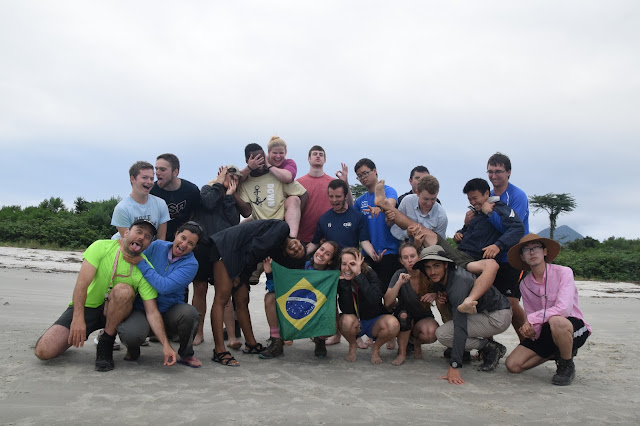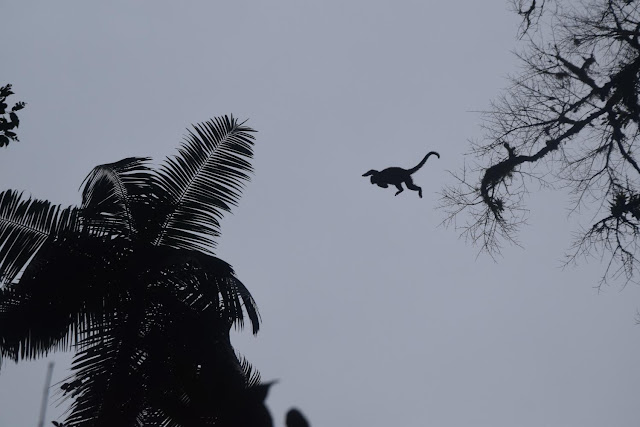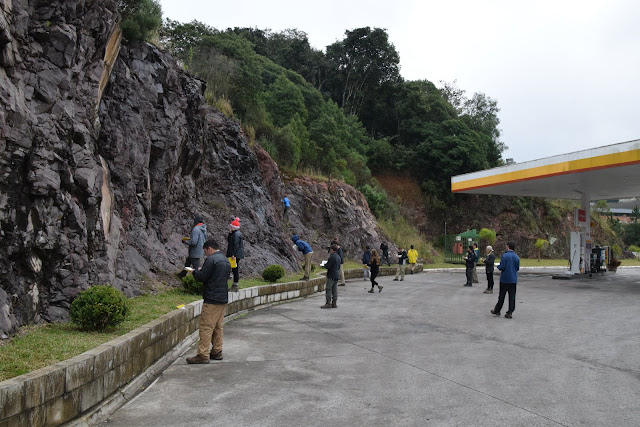"This has been an incredible experience. I have learned a lot about geology and ecology, seen a ton of incredible places, and met some awesome people. However, the most unexpected benefit of this trip was the Brazilian food; every dinner I had was amazing. The meat, especially, was excellent, no matter where we were or what type of meat it was. I cannot wait to come back to Brazil later in my life to experience this wonderful country, including its meat, another time." Nathan
"Our first free night in Florianopolis, almost the whole kid crew piled into a van and went to a jazz club — Casa de Noca. I felt this was my first true experience of Brazilian nightlife complete with a vast selection of great music, dope dancing, and a large conglomerate (had to at least mention a rock) of people enjoying their respective nights. I wouldn't change anything about this night, I learned so much from talking to some locals and just watching and participating in the jazzy atmosphere. Well, maybe I would've traded out the cheap Brazilian Pilsner beer... But in any event, the whole gang seemed to thoroughly enjoy that night." Andrew
"This trip consisted of countless amazing experiences ranging from bonding with a great group of people to enjoying the pristine beauty of Brazil. There were also many hilarious situations that would only stem from the kind of field work we were doing. Some of the best were our river crossings, near-vertical climbs, and car malfunctions. However, my favorite was by far sprinting through the forest, trying to keep pace with our tour guides. Seeing our middle aged tour guide outrun all of us, including Emmanuel, and proceed to slide under a tree at full speed, and emerge on the other side to continue running without losing any momentum was an awesome experience I wouldn't be able to get anywhere else." Sam
"Despite all the awesome shenanigans and non-shenanigans that deserve to be written as legends, the grey rainy day in Torres, for some reasons, stands to be my no. 1 moment of the maymester. The geology atmosphere was lit that day. Everyone was running around the outcrops and grinding hard. It's impressive that we all suddenly became very serious about a question regarding the formation of Torres. Perhaps it is due to the pressure of the midterm, perhaps not. Either way, it was amusing for me. The other reason is that there were too many no. 2 moments, which would not be suitable for public disclosure anyways." XJ
"All I can say is what a trip. Looking back at all of our adventures and photos (Don't forget the second photo, Guil, haha), I have realized that I don't have a single favorite experience. My favorite part of the trip has been getting to know everybody and developing as a student and as a person. I see it as a blessing how close our group got in just one month and I know that these friendships will last for years to come. I want to thank our leaders -- Guil, Lydia, Malu, and Jen -- for such a wonderful time and for giving us an experience of a lifetime and I want to thank you -- our readers -- for keeping up with us on our journey." Matan
"Perhaps one of the best things on this trip was the opportunity to see the diverse wildlife all around us and how they interact with the environment. The incredibly smart tour guides showed us the many uses of local plants and the helped point out animals that we would have never seen on our own. They also pointed out local geological features that better our understanding of the contexts that we needed to consider. This was an experience that would not have been possible outside of the program and this was certainly a life changing experience. Thanks for reading the blog and thanks to all the professors, graduate students, and guides that made this trip possible." Ben
"My most favorite part of the Maymester was undoubtedly our first hike in PETAR. It was our first day out in the field with Badass Malu, and I was super stoked to be in the rainforest to do some ecology. On our way up, our guides stopped us every now and then to tell us about plants with medicinal properties. We saw toucans, heard parakeets, and ate some Cana do Brejo among other things. This was also the first day we talked about palmitos, a tree that became a group favorite soon after. This was also the day we learned about the monkeys that live in the Atlantic rainforest, as our expert tour guides started calling them at the sight of freshly eaten bromeliad leaves. The one thing that made this day the best though was the hike on our way back. The guides took us through a shortcut which turned out to be the funnest hike we did. We had to resort to using tree roots, trunks, and branches (really anything sturdy enough to hold our weight) to propel ourselves up against the steep mountain hills. At the end of the hike, we all felt like we had accomplished something really great (if I can do this, I can do anything!), or at least I did. While that was my favorite hike, a lot of things made this trip an incredible experience for me. Never in my life have I been given a nickname before, and being called Avarninha (little Avarna) was one of the best feelings ever. In the animated character assignments, I was given the character of Nemo, which is an accomplishment in itself. Apparently I'm tiny and think I can do everything! All in all, this month is going to hold a big place in my heart and soul forever. Thank you Guil, Malu, Lydia, Jen, and Pablo for making this happen!" Avarninha out























